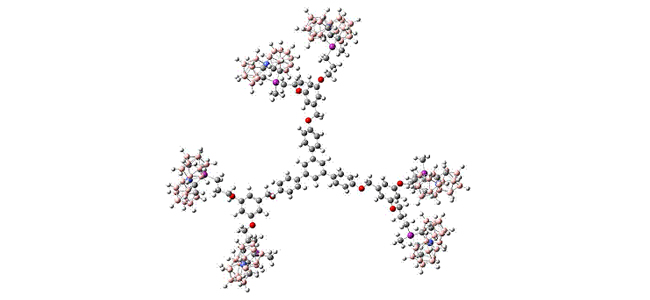
Author/s: E. José Juárez-Pérez, C. Viñas, F. Teixidor, R. Santillan, N. Farfán, A. Abreu, R. Yépez and R. Núñez
Reference: Macromolecules, 2010, 43 (1), 150-159.
Abstract:
Fluorescent Fréchet-type poly(aryl ether) dendrimers that incorporate the 1,3,5-triphenylbenzene as core molecule and 3, 6, 9, or 12 terminal allyl ether groups have been prepared in very good yield by following the Fréchet convergent approach. Regiospecific hydrosylilation reactions on the allyl ether functions with the cobaltabisdicarbollide derivative Cs[1,10-μ-SiMeH-3,30-Co(1,2-C2B9H10)2] lead to different generations of Féchet-type polyanionic
metallodendrimers decorated with 3, 6, and 9 cobaltabisdicarbollide units. Starting dendrimers exhibit photoluminescence properties at room temperature under ultraviolet irradiation; nevertheless, after functionalization with cobaltabisdicarbollide derivatives, the fluorescence properties are quenched. Products are fully characterized by FTIR, NMR, and UV-vis spectroscopies. For metallodendrimers, the UV-vis absorptions have been a good tool for estimating the experimental number of cobaltabisdicarbollide units peripherally attached to the dendrimeric structure and consequently to corroborate the unified character of the dendrimers.
Because of the anionic character of these compounds and the boron-rich content, we actually focus our research on biocompatibility studies and potential applications.
